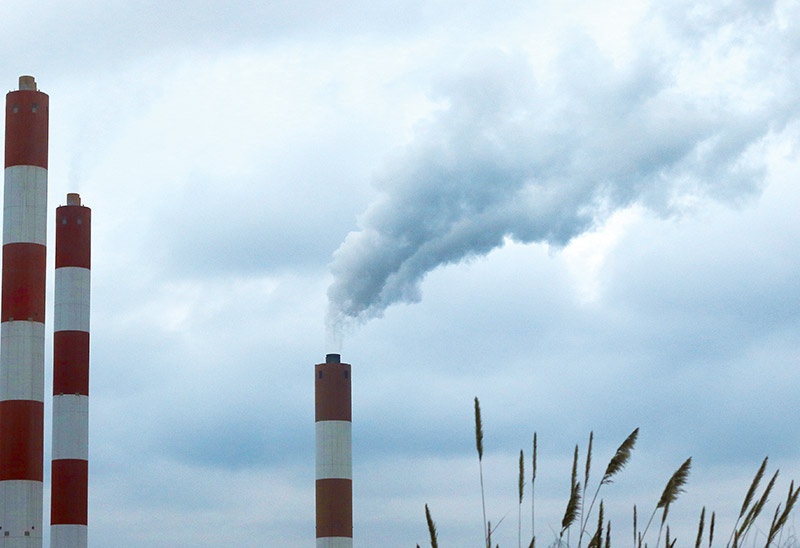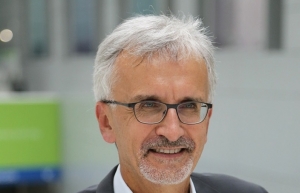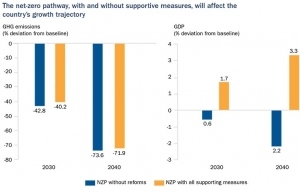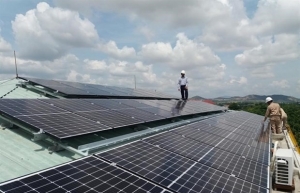International role key for methane emission cuts
Deputy Prime Minister Le Van Thanh on August 1 approved the National Strategy on Climate Change for 2050. According to the plan, by 2025, the total methane emission volume should not exceed 96.4 million tonnes of CO2 equivalent (CO2e), a decrease of 13.34 per cent from 2020.
The limits on CO2 emissions will be applicable to such areas as cultivation (42.2 million tonnes) and animal husbandry (16.8 million tonnes). By 2030, Vietnam will develop and implement an action plan to reduce methane emissions by 30 per cent compared to 2020.
Methane is the primary contributor to the formation of ground-level ozone, a hazardous air pollutant and greenhouse gas (GHG). Mitigating GHG emissions in agriculture is an urgent requirement because agriculture produces a substantial amount of it, which contributes greatly to global warming and climate change. According to the World Bank’s country report on climate and development for Vietnam, agriculture is the second-largest sector of GHG emissions, mostly methane, in Vietnam, accounting for about 19 per cent of the total national emissions in 2020.
 |
| International role key for methane emission cuts, illustration photo |
Rice production holds about 48 per cent of those emissions, followed by livestock (15.3 per cent), use of synthetic fertilisers (12.9 per cent), and manure treatment (9.5 per cent).
The target for methane emissions in the agricultural sector is considered ambitious but feasible. According to Katherine M. Nelson, a climate change specialist at the International Rice Research Institute (IRRI), which has an office in Hanoi, achieving the 30 per cent methane reduction target would require another nine million tonnes of CO2e, equalling a reduction of approximately 22 per cent, of methane reduction in the rice sector.
“The remaining 8 per cent will require a paradigm shift in agriculture policy prioritising emission reduction as an overarching goal in rice production,” Nelson noted.
The IRRI is working with key partners to boost Vietnam’s rice production via the Vietnam Sustainable Agricultural Transformation project. Lasting from 2015 and ending this past June, the project was implemented in eight provinces in the Mekong River Delta and actively worked with farmers to ensure sustainable rice farming in the country’s rice bowl.
Nguyen Anh Minh, former deputy director of the Department of International Corporation under the Ministry of Agriculture and Rural Development (MARD), told VIR, “International organisations play important role in helping Vietnam touch the GHG target and methane gas mitigation target in particular. Because agriculture is fragmented, farmers do not yet have enough awareness of the importance of GHG emissions during the cultivation process. Meanwhile, the expenses for GHG mitigation are too costly.”
According to the estimation of the Energy Transitions Commission – which is a global coalition of leaders from across the energy landscape aimed at accelerating a zero-emissions future – it takes between 1 and 1.5 per cent of global GDP per year to achieve the net-zero target by 2050, and Vietnam would need $147-221 billion for this plan. Meanwhile, the agricultural sector is one of the biggest emitters in the country, thus the cost for this sector accounts for a major part of the expense.
The MARD has been increasing cooperation with international organisations to promote low-emissions agriculture. It has also committed hundreds of millions of dollars to help Vietnam in GHG mitigation, including methane.
In late June, the MARD and the United States Agency for International Development signed an agreement on climate change cooperation in the Mekong Delta for the 2022-2027 period. A part of the financial supporting package worth $50 million will be allocated to implement an action plant for methane gas emission.
Moreover, the Climate and Clean Air Coalition worked with the MARD’s Institute of Policy and Strategy for Agriculture and Rural Development to update the agriculture component in Vietnam’s Nationally Determined Contributions, and develop the country’s plan to implement the Paris Agreement for agriculture over this decade.
 | Can Vietnam achieve its goals on net-zero emissions? Vietnam’s economic achievements have been impressive over recent decades but greenhouse gas emissions have risen alongside them. Patrick Lenain, former assistant director at the Organisation for Economic Co-operation and Development, looks at the carbon market for this country moving forward as it tries to meet major emission-reducing targets. |
 | Rallying cry for Vietnam’s steadfast net-zero strategy Vietnam may have to mobilise a colossal amount of funding to fulfil its international commitment to achieve net-zero emissions by 2050, with a hallmark new strategy on climate change response soon to be enacted. |
 | Vietnam needs extra 368 billion USD to achieve net zero emissions As the energy industry has a crucial role in achieving net zero emissions by 2050, it requires a structural transition toward green growth. Therefore, Vietnam needs assistance from developed countries regarding both financial and technical issues. |
What the stars mean:
★ Poor ★ ★ Promising ★★★ Good ★★★★ Very good ★★★★★ Exceptional
Related Contents
Latest News
More News
- Businesses ramp up production as year-end orders surge (December 30, 2025 | 10:05)
- Vietjet chairwoman awarded Labour Hero title (December 29, 2025 | 13:06)
- How to unlock ESG value through green innovation (December 29, 2025 | 10:03)
- AI reshapes media and advertising industry (December 29, 2025 | 08:33)
- FPT and GELEX sign deal to develop blockchain tech for global markets (December 29, 2025 | 08:29)
- Vietnam’s GDP forecast to grow by 9 per cent in 2026 (December 29, 2025 | 08:29)
- Women entrepreneurs are key to Vietnam’s economic growth (December 29, 2025 | 08:00)
- Vietnam's top 500 value-creating enterprises announced (December 27, 2025 | 08:00)
- The PAN Group shaping a better future with ESG strategy (December 26, 2025 | 09:00)
- Masan Consumer officially lists on HSX, marking the next phase of value creation (December 25, 2025 | 13:20)

 Tag:
Tag:





















 Mobile Version
Mobile Version